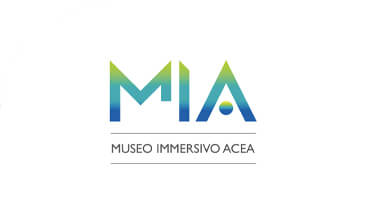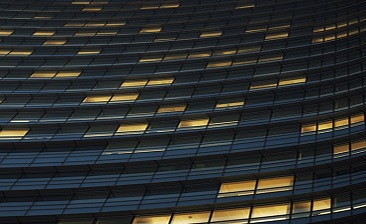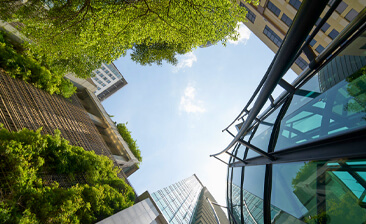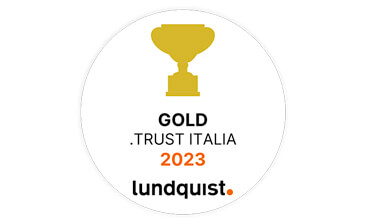
Acea for World Energy Saving Day
The sound of water is what characterizes one of the most memorable places in the city: the Trevi Fountain.
Walking by the fountain at night, when no one is around, you may imagine hearing «Marcello, come here!», the voice of the amazing Anita Ekberg inviting Marcello Mastroianni to join her in the water, in the scene from the famous film directed by Federico Fellini “La dolce vita”. During the day, when the piazza is full of people, you may think you have spotted the foolish tourist to whom Totò tried to sell the fountain in the comedy film “Totòtruffa '62”.
The scenes of these famous movies have contributed to the fountain’s iconic status: everyone knows it, dreams of seeing it and taking pictures of it at least once in their lifetime, and for the citizens of Rome it is a special place and a symbol of the city worth protecting.
This is why Acea takes daily care of the water in the fountain and of the lights that enhance the details and beauty of its Baroque sculptures.
Acea focuses on managing and maintaining the systems and water reservoirs that uninterruptedly supply water to the fountain.
Every 15 days, in collaboration with the electromechanical engineers, we carry out maintenance work to ensure the recycling pumps and the entire water abduction system operate as expected.
Davide d’Alonzo, head manager of the artistic fountains of Rome
His team of engineers intervenes three times a week to clean the fountain and twice a month to completely drain the basin and disinfect the water.
System maintenance happens behind the marble scenes that hide the state-of-the-art technology at the heart of the monument: the maneuvering chamber, the old vaulted-ceiling reservoir, level with the basins, that looks out onto the fountain through the two large windows from which originally water would drain out to avoid overflowing. “We often offer guided tours to high school and university students, and in special occasions. I have shown the chamber to engineers, architects, and personalities from all around the world, including heads of state and monarchs.
1872
A double-tank reservoir supplies water to the fountain and the lines that distribute water to residents
1946
The first electric recycling pumps are installed
1976
The electric pumps are moved into the second tank, level with the fountain
Today
The electric pumps are controlled remotely
Today, as in the past, the maneuvering chamber is divided in two tanks.
“Each tank had a capacity of 400 m3 of water. The water came directly from the Acqua Virgo aqueduct, with a capacity of 500 liters per second, at a 90 angle in relation to the statue of Oceanus. From there, water drained through a slit in the wall from which 220 liters of water dropped first into a large vase, then into 4 amphorae, and finally into the tanks. Today, we allow the same amount of water to flow through the fountain. And we maintain the pressure of the water constant, to avoid overflows or interruptions. The rest works exactly as it did originally, thanks to a water fall system.”
“The maneuvering chamber has always been, and still is, the beating heart of the Trevi Fountain. I like to think of it as the heart but also the brain of the fountain.” says Davide.
The water in the Trevi Fountain is the same every day: it is checked, purified, and pumped back into the system.
One of the two tanks contains four electric pumps constantly in operation, of which two are dedicated specifically to supplying water to the fountain. Acea controls them remotely: “they were installed on the same level as the fountain in 1979, they operate 24/7, and supply 220 liters of water per second. Every 8 hours one stops and the other one takes over”.
Interesting historic fact: in the past, the water from the Acqua Virgo aqueduct was collected in the other tank, the so-called “stagnation chamber”. The water ended there before being distributed to the homes of the rich residents of the city. “The equivalent of a calculation sheet, which was regularly wiped and updated by hand, is still visible on one of the chamber’s walls. It listed the families and their payments: if a family did not pay their fees, their water supply was interrupted.” Davide explains.
Acea constantly checks the water in the Trevi Fountain, monitoring pH values, temperature, and amount of chlorine. Additionally, it provides all the water treatments necessary to preserve the marble.
I love my work because it gives me access to places that not everyone can see. When I go into the Acqua Virgo aqueduct I often think: welcome to the time machine. Every time I’m there, below ground, only the occasional noise from an underground train draws me back to the present.
Davide d’Alonzo, head manager of the artistic fountains of Rome
The sustainable lighting system has been designed specifically to ensure significant energy savings. It comprises approximately 100 underwater LED light projectors, which have replaced sodium lamps. The lights are strategically positioned to point at the fountain’s most symbolic elements. The projectors highlight certain aspects of the sculptures with narrow cone-shaped beams of different intensity; a technique known as accent lighting.
To give depth to the niche from which Oceanus steps out, projectors have been pointed at the shells behind him; from below, light beams point at the horses pulling the chariot; more projectors have also been placed inside the basin of the fountain, at the foot of the rocks.
The system illuminates the fountain until dawn, when natural sunlight takes over from the artificial illumination: light never stops shining on the most famous fountain in the world, and Acea never stops taking care of it, day after day.
The history of the Trevi Fountain. Where did it get its name from?
Legend has it that a young girl showed the water spring to Agrippa’s soldiers. Agrippa was the son-in-law of Emperor Augustus, who put him in charge of the construction of an aqueduct to bring water to the city from the Salone spring, along the Collatina road, in order to supply water to the baths of Campo Marzio. The fountain may have been named after the area where the spring originated (Trivii region), or the three spouting points of the original fountain.
The iconography and the role of water in the monument
The sculptures we see in the fountain today capture the precise moment in which the Titan Oceanus arrives in the city on a shell-shaped chariot being pulled by a docile horse and a wild horse led by two Tritons. The fountain is decorated with other elements that not everyone notices, such as numerous species of different plants and animals, including a snail and a lizard, ornamental details and symbols of a natural world that thrives thanks to water.
Discover the latest news and initiatives of the Acea Group

Acea for World Energy Saving Day

Visit the virtual museum about the history of the Acea Group

The channel for the commercial requests on land urbanisation

Acea turns the spotlight on the Rome Film Festival 2023

Acea is in the "Gold class" in the .trust research

Read more about our culture of inclusiveness